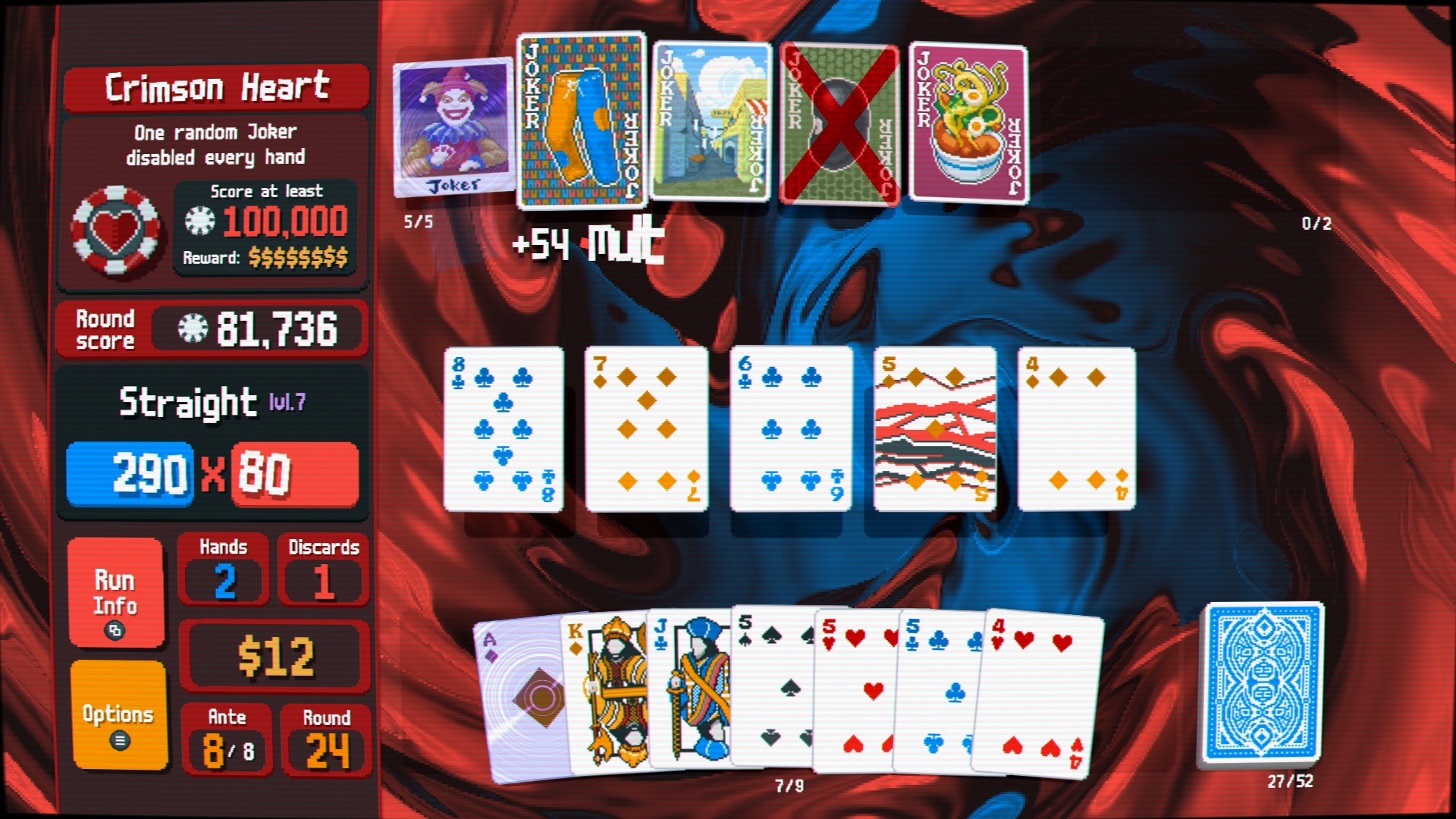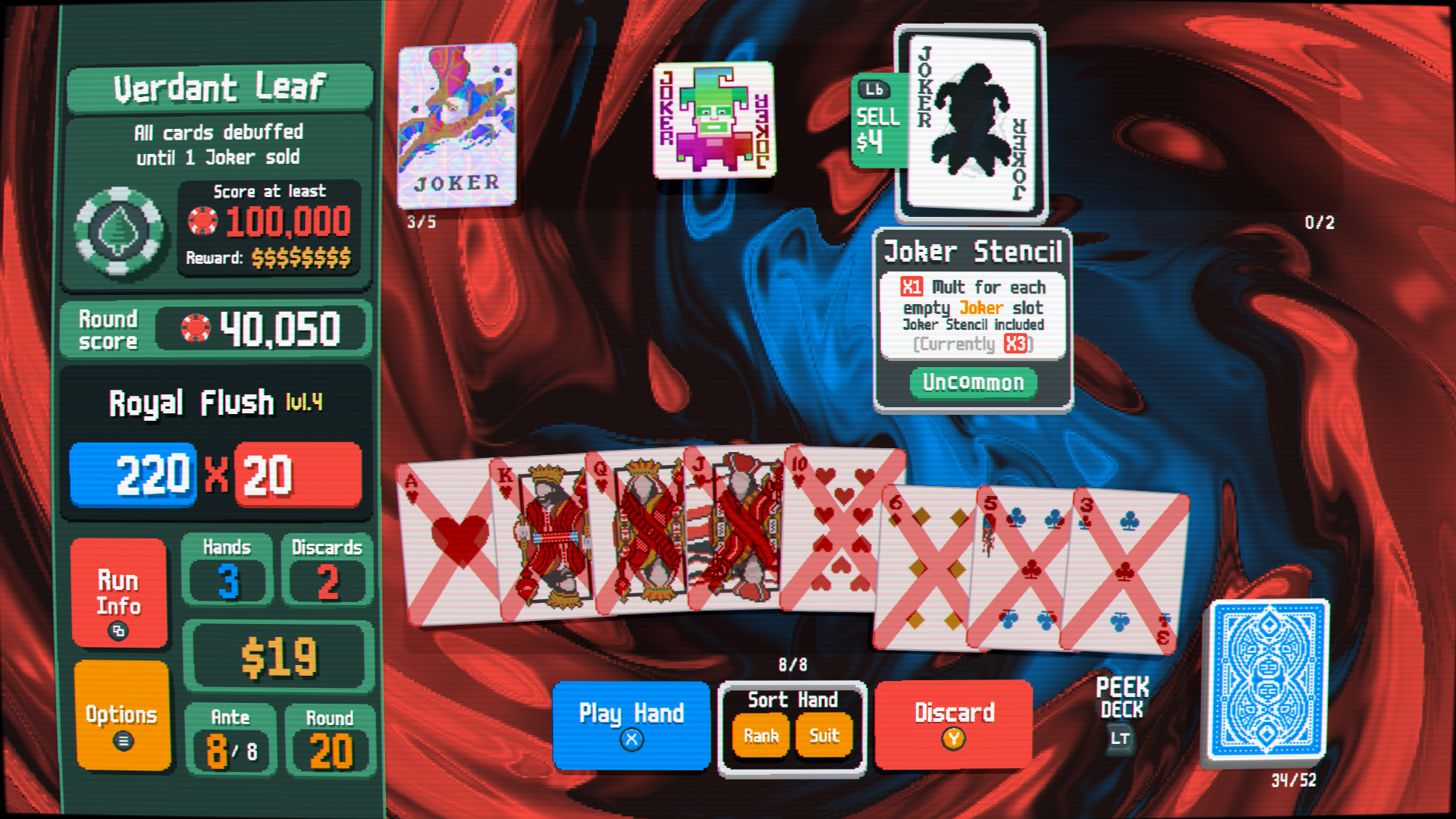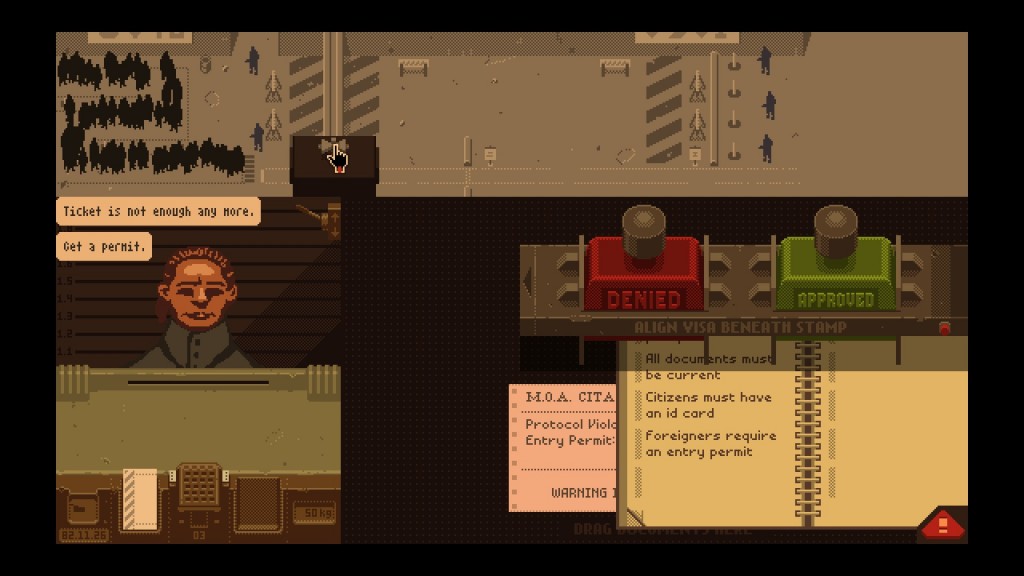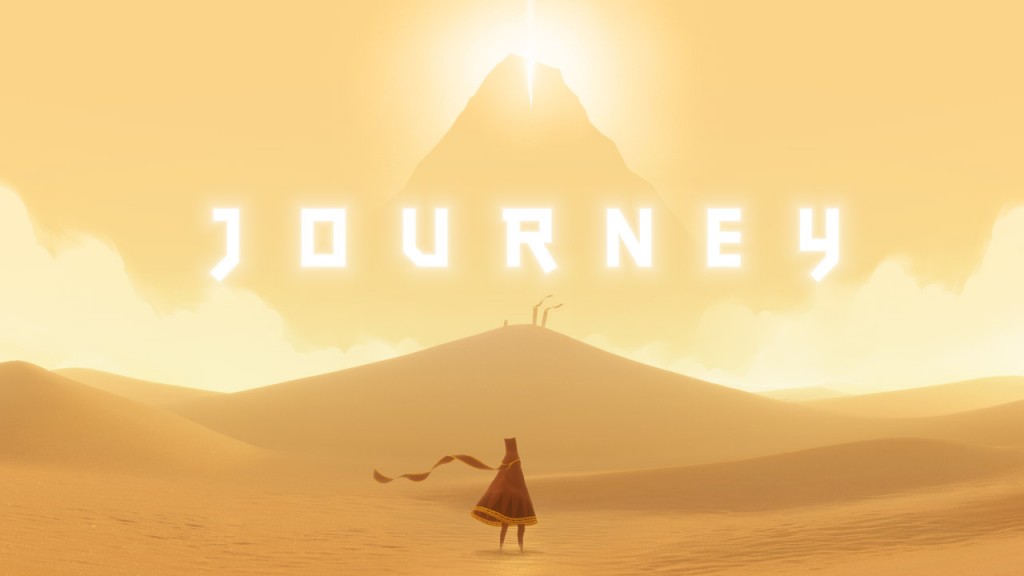Introduction
Balatro is a well-regarded roguelite indie game that I have been playing since it arrived on Microsoft’s Game Pass.
Despite knowing nothing about card games in real life, I really like this one. While it looks like a card game, the real focus is on planning and building a cohesive strategy on the fly, using the bonuses that become available in any given run. Its brevity and low-stress, cheerful nature make it the perfect game to fit around real life.
For roguelite / deckbuilder fans, and especially for Game Pass subscribers, Balatro is an easy recommendation.
What do you do in the game? (Synergise jokers.)
This is a Balatro round in progress:

The goal of each round is simple — play card hands to reach the target number of chips, visible at the top left of the screen. Failing to meet the target is a game over. Meeting the target leads to the shop where I can unlock different bonuses, and then progress to the next, harder round.
The key to Balatro is that it’s not actually about the cards at the bottom of the screen, it’s about the jokers — the (typically) up to five bonuses visible at the top of the screen. Typically, a good setup will have a minimum of three types of jokers:
- Chips (for example, “+50 chips” or “+2 chips for each card remaining in the deck”)
- Additive (for example, the Abstract Joker gives “+3 multiplier per joker”, for +15 total with five jokers)
- Multiplicative (for example, the Baseball Card joker gives “x1.5 mult per uncommon joker”, so having 3 uncommon jokers will increase the multiplier by 1.5^3 or 3.375 times)
Then add “support” or “income” jokers as needed.
For example, if I play a card hand worth 10 chips and with a base multiplier of 1, the maths will look like this:
- Start with 10 chips
- + 50 chips from joker = 60 chips
- 1 base multiplier +15 multiplier = 16 multiplier so far
- 16.0 multiplier * (1.5^3) = total 54 multiplier
- Final number of chips = 60 chips * 54 multiplier = 3,240
Not a bad increase from a starting point of 10!
And this is why I say Balatro is about jokers first and cards second. Card hands that seem terrible at first glance, such as playing a single card (“High Card”), become appealing with an appropriate joker setup: High Card builds never have to worry about drawing the right card or combination of cards.
Conversely, powerful hands are often challenging to set up: a Straight (5 consecutive cards) is mathematically unlikely, unless:
- I have jokers that make this easier — for instance, by allowing non-consecutive numbers (the “Shortcut” joker); by allowing 4 cards instead of 5 (“Four Fingers”); or both.
- I have tweaked my deck along the way (for example, by choosing bonuses that adjust cards’ strength or that allow me to delete cards)
Besides jokers, Balatro contains many other bonuses that can be unlocked along the way. For example:
- “Tarot” cards affect the playing cards themselves — giving them more chips, bonuses to their multiplier, or adjusting their suit or strength.
- “Planet” cards strengthen card hands, making them worth more chips and increasing their multiplier.
As such, while playing individual rounds is about trying to maximise chips to beat the target (and sometimes, taking advantage of other bonuses before beating the round), playing an overall run is about answering different questions:
- What jokers have I encountered / do I have available?
- How can I build a cohesive strategy around these jokers?
- How can I choose other bonuses and adjust my deck to support that strategy?
At times, this can feel like trying to assemble a plane in mid-air — and that makes it all the sweeter when a build comes together.

Short and sweet
Besides its core gameplay, I like several other aspects of Balatro:
- It’s not particularly mentally taxing or stressful to play.
- It’s short — a complete run takes maybe 1-1.5 hours.
- Because of this, it’s short enough for its “roguelite” design to work — frequent Game Overs are tolerable (and less frustrating!) when it doesn’t take much time to start again and there isn’t much progress to lose.
- This also makes it much friendlier to real life.
Conclusion
Balatro deserves its fame — it’s quick to play, deep (there are many paths to victory that tick the three vital boxes of + chips, + multiplier, and x multiplier), and satisfying when things come together.
Now to see if I can beat that pesky Green Stake difficulty…

